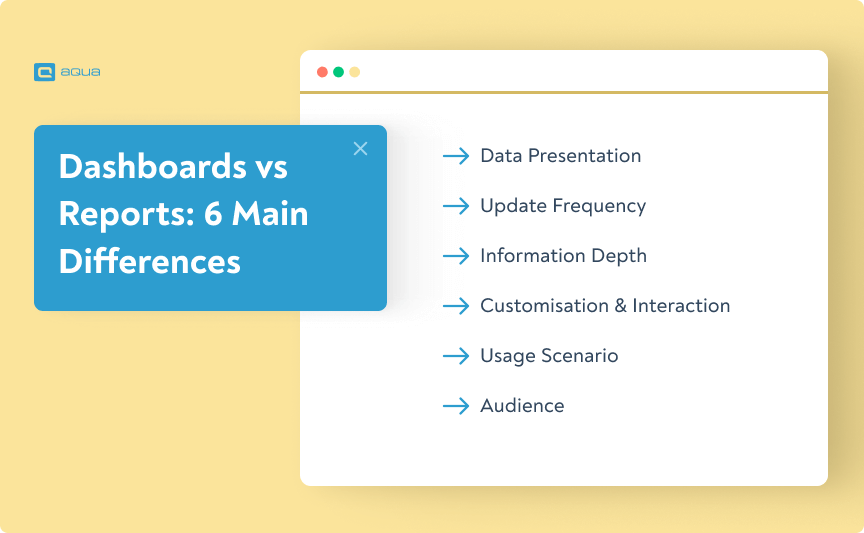What is a QA Dashboard?
A QA dashboard is an interactive visualis interface, designed to display the most crucial testing metrics at a glance. A QA dashboard is more than just a collection of figures. It’s a dynamic interface that showcases real-time data, letting you keep an eye on your testing results as they happen. Key features of such dashboards include:
- Real-time Data Monitoring: Data in dashboards is continually updated, providing instant insights into the testing process.
- Customisable Views: Teams can tailor the dashboard to display specific KPIs, metrics, and other vital data points relevant to their project or organisation.
- Interactive Elements: With features like drill-down options, teams can delve deeper into specific metrics for a more detailed analysis.
- Visual Representations: Graphs, charts, and heatmaps make data interpretation intuitive and straightforward, catering to technical and non-technical stakeholders.
Now that you know this, it makes sense to ask: which dashboards are the most popular and efficient in QA? Based on recent industry data, below are the three most commonly used dashboards among QA experts:
- Bug Density Tracking Dashboards: Providing real-time insights into the number and severity of bugs within a given software iteration.
- Test Execution Rate Monitors: Giving teams an immediate overview of how many test cases have been executed, passed, and failed.
- Software Performance Metric Analysers: Highlighting the software’s performance, speed, and reliability in various scenarios.
However, while these dashboards cater to most QA needs, you often need a more tailored approach. Adding dashboards like defect age analysis, test coverage charts, or sprint burn-down metrics to your workspace might prove beneficial.
"Dashboards are a vehicle that assists us in moving from data to insight."
What is a QA Report?
While dashboards provide real-time insights, QA reports present data comprehensively and structured. A QA report is essentially a document, sometimes static, detailing the results, outcomes, and recommendations post-testing. Reports play a crucial and pivotal role in decision-making in many traditional software development lifecycles, such as the Waterfall model. They are structured, methodical, and thorough in their approach. Key features include:
- Detailed Analysis: Comprehensive information on various testing metrics, offering insights into every nuance of the testing process.
- Periodic Updates: Unlike the real-time nature of dashboards, reports are typically generated daily, weekly, or after specific testing milestones.
- Narrative Insights: Reports are crafted to provide context, weaving data into a storyline that clearly explains the testing results.
- Tabular & Graphical Data: Tables and basic graphs break down complex data sets, making the report reader-friendly and interpretable.
Having covered the key aspects of reports, we can now delve into the various types of reports and their unique functionalities. Like dashboards, there are also different types of reports, including the following three:
- Defect Trend Analysis Reports offer insights into the trends of defects you’ve identified over time. They detail issues’ types, frequency, and status changes throughout different software iterations, helping you track and understand the evolution of problems.
- Test Coverage Summary Reports give you a comprehensive overview of the test coverage you’ve achieved. They detail the percentage of requirements or functionalities tested and their status—covered, partially covered, or not covered—giving you a clear picture of what’s been tested and what needs attention.
- Release Quality Assessment Reports evaluate the overall quality of your software release. By aggregating data on test execution results, defect density, and other quality metrics, they provide you with a snapshot of your software’s readiness for deployment, helping you make informed decisions about releasing your product.
These QA reports are instrumental in reviewing test planning efficacy, understanding the root cause analysis of defects, evaluating team performance, and offering actionable recommendations.
Considering the distinctions between reports and dashboards, you might feel inclined to pick one over the other. However, the Test Management System (TMS) brings everything together, making QA dashboards and reports work hand in hand. This combo doesn’t just make things easier to see; it helps you plan tests better, do them more systematically, and understand what needs fixing. With a TMS, you see the bigger picture of the QA process, so you can make smarter decisions, keep improving, and aim for higher quality standards.
And what if there’s a solution that provides the best of both worlds? aqua cloud is a comprehensive platform that seamlessly integrates extended reports functionality and dynamic dashboards. With aqua, you don’t have to compromise; you gain access to diverse metrics, KPIs, and export formats, empowering your QA process with unparalleled transparency and insights. Experience the mix of robust reporting and interactive visualisation—embrace aqua for a holistic QA experience.
Achieve 100% transparent and insightful transparency in QA with aqua Dashboards module
Comparing Dashboards and Reports
At first glance, you might think dashboards and reports are interchangeable in the QA ecosystem. However, the differences become apparent when you look into the functionalities and purposes they serve. Both are vital in their own right and can be seen as complementary rather than competing. Below, you see the comparison of their distinctive attributes, clarifying when and why you should choose one over the other.
1. Data Presentation
- Dashboard: Offers real-time, dynamic visualisations with interactivity.
- Report: Provides a structured, periodic snapshot of testing results, often in a narrative form.
2. Update Frequency
- Dashboard: Continually refreshed to provide instant data insights.
- Report: Generated at predetermined intervals, capturing data from a specific timeframe.
3. Depth of Information
- Dashboard: Gives a high-level view, allowing for immediate insights.
- Report: Goes in-depth, enabling a thorough analysis with comprehensive data sets.
4. Customisation & Interaction
- Dashboard: Highly customisable with interactive elements, enabling users to engage with data dynamically.
- Report: More static in nature, crafted for detailed study rather than real-time manipulation.
5. Usage Scenario
- Dashboard: Ideal for regular monitoring and quick decision-making.
- Report: Best suited for in-depth reviews, strategy sessions, and stakeholder meetings.
6. Audience
- Dashboard: Suitable for a broader audience, from QA teams to top-level management.
- Report: Often tailored for specific stakeholders, such as project managers, QA leads, and executive teams.

While understanding the nature and features of dashboards and reports is crucial, it’s equally important to comprehend how they fit into your daily operations. Let’s break down their practical applications:
Dashboard
- When to Use: Utilise dashboards when you require real-time insights, such as during ongoing testing cycles, daily stand-ups, or when you need to monitor the progress of QA tasks frequently. They are especially handy for teams practising Agile methodologies where quick decision-making is paramount.
- Building Your Workflow: Begin your day or week by quickly glancing at the dashboard to get a pulse on the ongoing projects, bug statuses, or test executions. This gives you an instant snapshot, helping you prioritise tasks or identify immediate concerns.
Report
- When to Use: Turn to reports when you’re preparing for weekly reviews, stakeholder meetings, or when you’re wrapping up a testing phase. They are essential for teams that need structured feedback, comprehensive analysis, and detailed data to make informed decisions.
- Building Your Workflow: Dedicate specific intervals (e.g., end of the week or post-testing phase) to delve deep into reports. Study them to gauge the testing process’s effectiveness, identify improvement areas, and strategise the next steps.
Remember, choosing between a dashboard and a report isn’t about picking the superior tool; it’s about recognising which tool aligns best with your immediate needs and technical objectives. Both have their place in the QA landscape, and their optimal utilisation can substantially elevate and most likely change your QA processes.
Similarities between dashboards and reports
It’s not only about differences: dashboards and reports also share similar functions and purposes, particularly in software testing and QA management. Here are some of them:
- Overview and Insights: Both dashboards and reports provide an overview of key metrics and insights relevant to software testing and QA management. A software testing dashboard and a QA management dashboard both offer at-a-glance visibility into various aspects of the testing process, such as test execution status, defect metrics, and test coverage.
- Visual Representation: Dashboards and reports often utilise visual representations, such as charts, graphs, and tables, to convey information effectively. A software testing dashboard may display metrics like test pass rates, bug trends, and test case distribution through visual elements, similar to how reports present data in visual formats for easier comprehension.
- Customisation and Interactivity: Dashboards and reports often offer customisation options to tailor the displayed information to specific needs and preferences. Users can typically interact with dashboards and reports to drill down into details or filter information based on various criteria, enhancing usability and flexibility.
While dashboards and reporting tools differ in their presentation styles and interactivity, they share commonalities in their ability to provide insights, visualise data, offer real-time monitoring, and support customisation in software testing and QA management.
I’ve used a low-tech testing dashboard before and found it met my needs quite nicely.
Conclusion
When diving into the realms of QA, the significance of dashboards vs reporting is undeniable. Each serves unique purposes in the QA process, from offering quick, real-time insights to presenting a detailed and structured overview of testing results. However, the key isn’t merely to understand these tools in isolation but to find an optimal solution that seamlessly integrates them.
If you’re seeking an efficient way to harness the power of dashboards and reports, aqua is designed precisely with your needs in mind. With aqua, you’re not just getting a tool but adopting a comprehensive solution. Our platform offers pre-configured reports for immediate use, ensuring you don’t miss out on crucial data points. Yet, if you desire a personalised touch, aqua’s customisable dashboards allow you to craft an interface tailored to your project or organisation’s specific needs. Its intuitive design makes even the most complex dashboard setups a breeze.
Revolutionise your reporting game with 100% transparent dashboards







